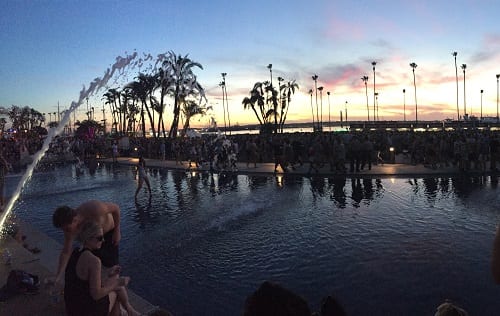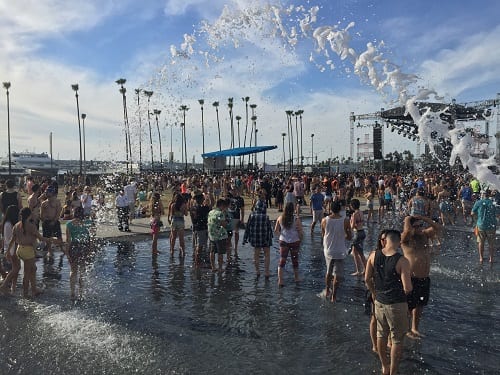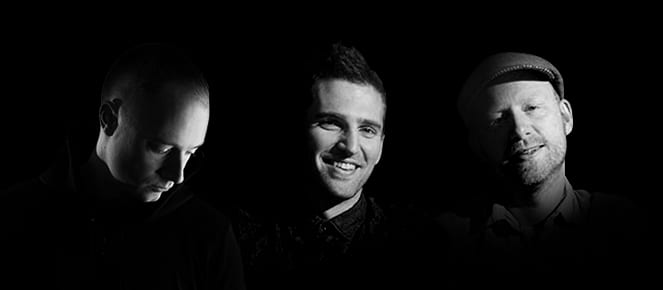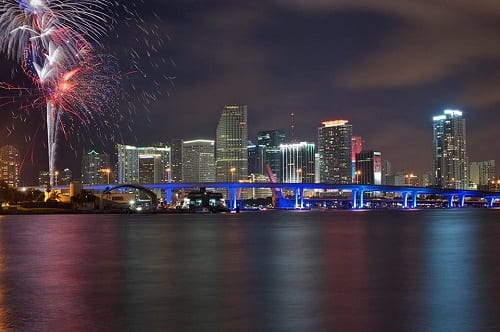It was a tough choice between SxSW and CRSSD last week. But, as a California native, I couldn’t resist the temptation to return to my home turf for the newcomer festival.
Produced by Southern-California based LED events and Goldenvoice, the same creators of Coachella, CRSSD is one of the most recent additions to the US’s running list of dance music fest events, but offered enough unique qualities to make it a SoCal staple. Here’s what I learned:
California does it better
If the aura and appeal of Southern California could be combined to make a festival, it would be CRSSD.
The weekend was filled with sun, good vibes, and beautifully bronzed people. It was the kind of festival where you could dance barefoot in the grass, or chill in a seated circle with your crew. Situated on the beautiful San Diego Waterfront Park, the venue couldn’t have been more idyllic. Surrounded by palm trees, we were free to dance in the water fountains as day turned from clear blue skies to technicolor sunsets… Location, ambience and setting-wise, you couldn’t help but admit that Cali really does it best.
CRSSD wanted to educate their fans – and they were willing pupils
The biggest appeal CRSSD had to its name was its lineup. The lineup naturally included techno heavy weights such as Maceo Plex, Jamie Jones and Pete Tong, but attracted mainstream fans with familiar names such as Odezsa, Thomas Jack and Empire of the Sun. And there were plenty of less familiar underground acts that stole the show, from Goldroom, to Danny Daze and James Murphy. CRSSD was catered to an array of tastes, and crossed perfectly between mainstream and underground.

They do it live
The icing on the lineup cake was the fact that many of the sets were performed with live instruments and vocals. At the main stage, Hot Natured opened up with a live rendition of their huge hit Reverse Skydiving. Vocalist Anabel Englund sounded just as good in person through the mic, who also performed live at The Palms stage, crooning the vocals to Electricity alongside Pleasure State counterparts Lee Foss and MK.
The majority of the acts on the main stage were live music. Of course this isn’t such an innovative concept for concerts, but was a quite refreshing change up for a crowd that’s more used to all the music happening behind the decks.
Dress code matters
When CRSSD announced their “ban” (or rather, strong discouragement) towards rave attire, it was met with both praise and criticism. Those in the critic camp felt the ban was an unfair limit on the freedom and self-expression was entirely against what dance music is meant to stand for.
Proponents of the ban, however, argued it’s not so much the attire that gets people fussy – it’s the behavior associated with it. In either case, CRSSD proved you don’t have to wear kandi cuffs, glow sticks and fuzzy boots to both look good and have a good time.
There was still a pervasive style – girls rocked billowy, bohemian dresses with matador hats and fashion statement sunglasses; guys opted for chucks and t-shirts. You still saw a few bracelets or other traditional rave shout outs, but they were appropriately donned and chosen with meaning.
This could be the future of dance music festivals in the US
CRSSD was like the ultimate Goldie Locks – not too hot, not cold – or rather, not too ‘EDM’, not too underground. With mainstream becoming passé, event organizers and fans alike have moved in search of ways to stay on trend. CRSSD very much catered to the typical dance music crowd, the festival found that perfect sweet spot in between both worlds. If this is any indication of the new festival criteria we can expect to see, we’re in for some good events.


